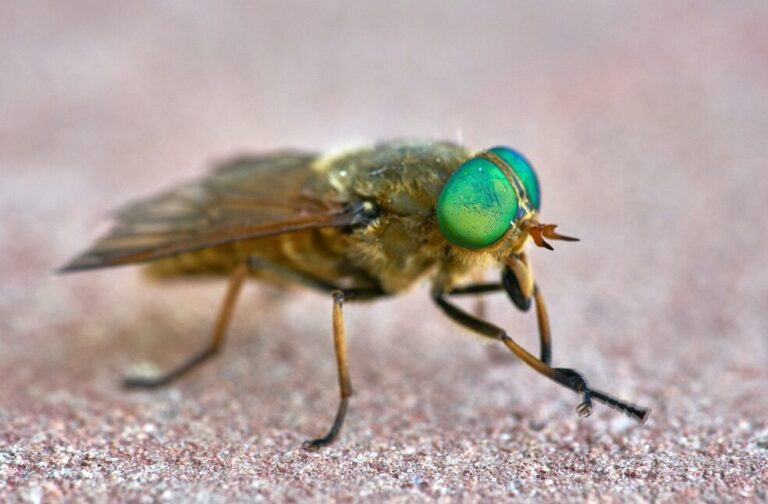London, UK: Scientists have revealed that biting flies are highly attracted to blue objects because they mistake the colour for animals they prey on. As per the statement, this discovery has the potential to enhance the battle against diseases transmitted by flies, like sleeping sickness, by increasing the efficacy of traps.
Dr. Roger Santer, leading the research at Aberystwyth University’s Department of Life Sciences, explained that entomological studies have long observed flies’ attraction to blue, leading to the production of traps in that colour worldwide. However, the reason behind this specific attraction has remained a puzzle for researchers.
To solve this mystery, the team developed artificial neural networks that simulate the visual processing that occurs in the brains of flies like tsetse, stable, and horse flies. These networks were trained to distinguish between animals and leaf backgrounds, as well as shaded and unshaded surfaces, using the responses of the five types of photoreceptor cells found in flies’ eyes. The networks were then tested on their ability to classify blue flytraps.

The results, published in the Proceedings of the Royal Society B journal, challenge the theory that blue objects resemble shade flies. The neural networks identified shade based on brightness and did not misclassify blue objects as shade. However, when it came to recognizing animals, the networks compared the responses of blue and green-sensitive photoreceptor cells and frequently mistook blue traps for animals. This led the researchers to conclude that blue objects, including traps, resemble potential hosts to flies.
Understanding the mechanisms behind fly attraction to coloured traps can aid in the development of more efficient trap colours. This is crucial as different species of biting flies contribute to the spread of diseases in humans and animals. The research could prove vital in tackling diseases like human African trypanosomiasis (sleeping sickness), which is endemic in sub-Saharan Africa and often fatal without treatment. Additionally, it could assist in controlling the stable fly, a prevalent global pest that poses a threat to livestock.
The team’s findings are supported by field experiments, which indicate that tsetse flies caught in blue traps have likely been actively seeking hosts rather than recently feeding.



